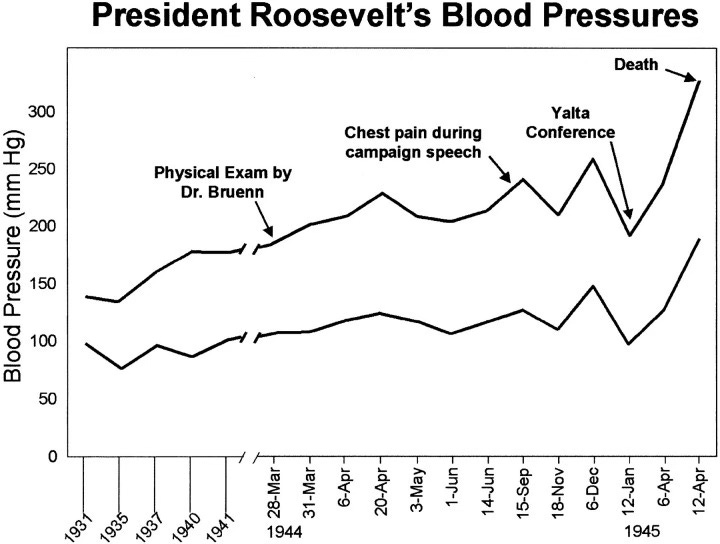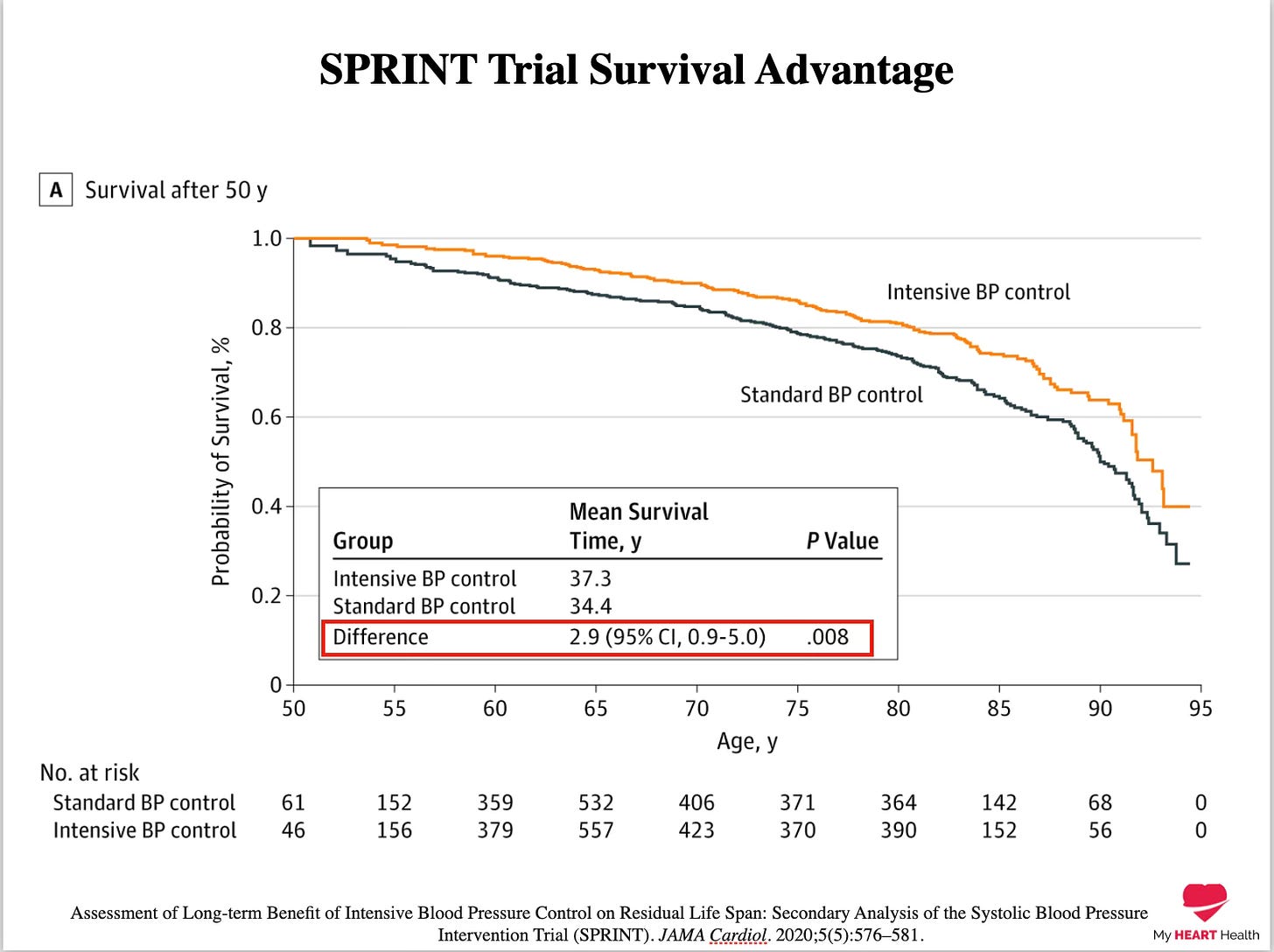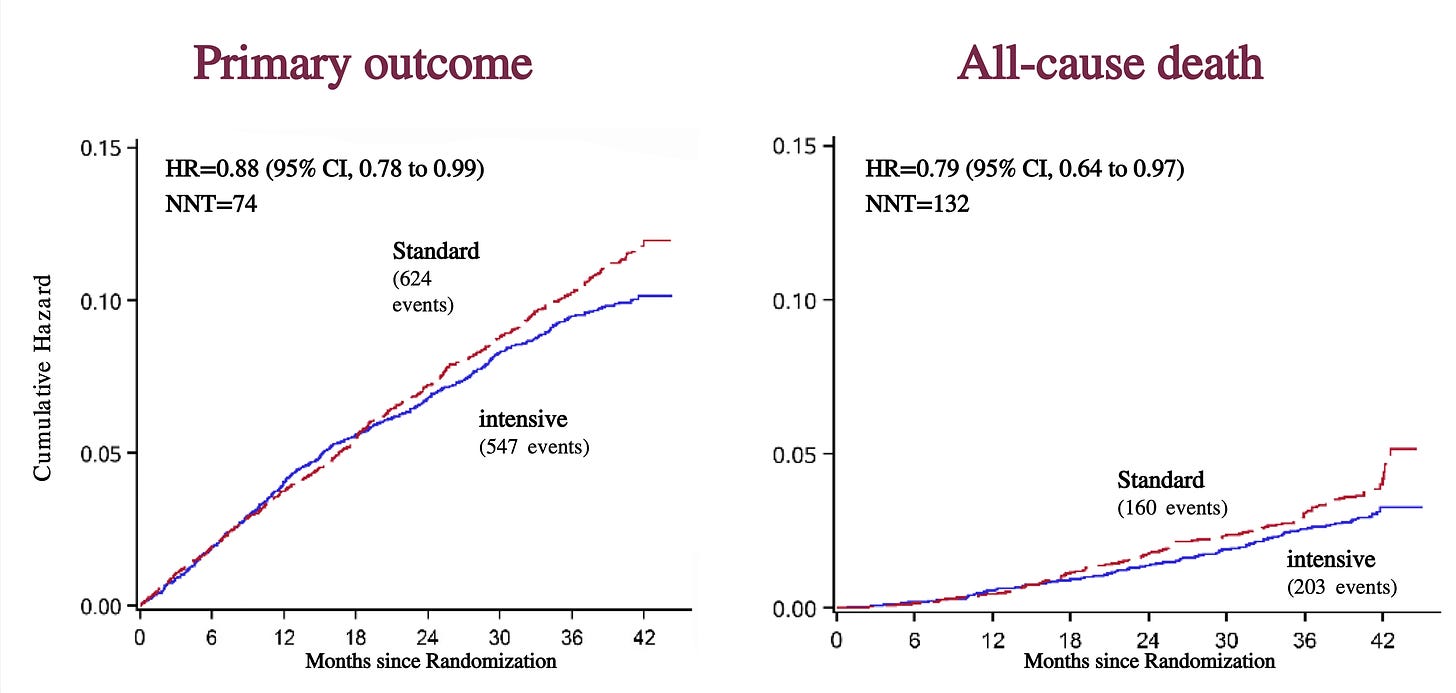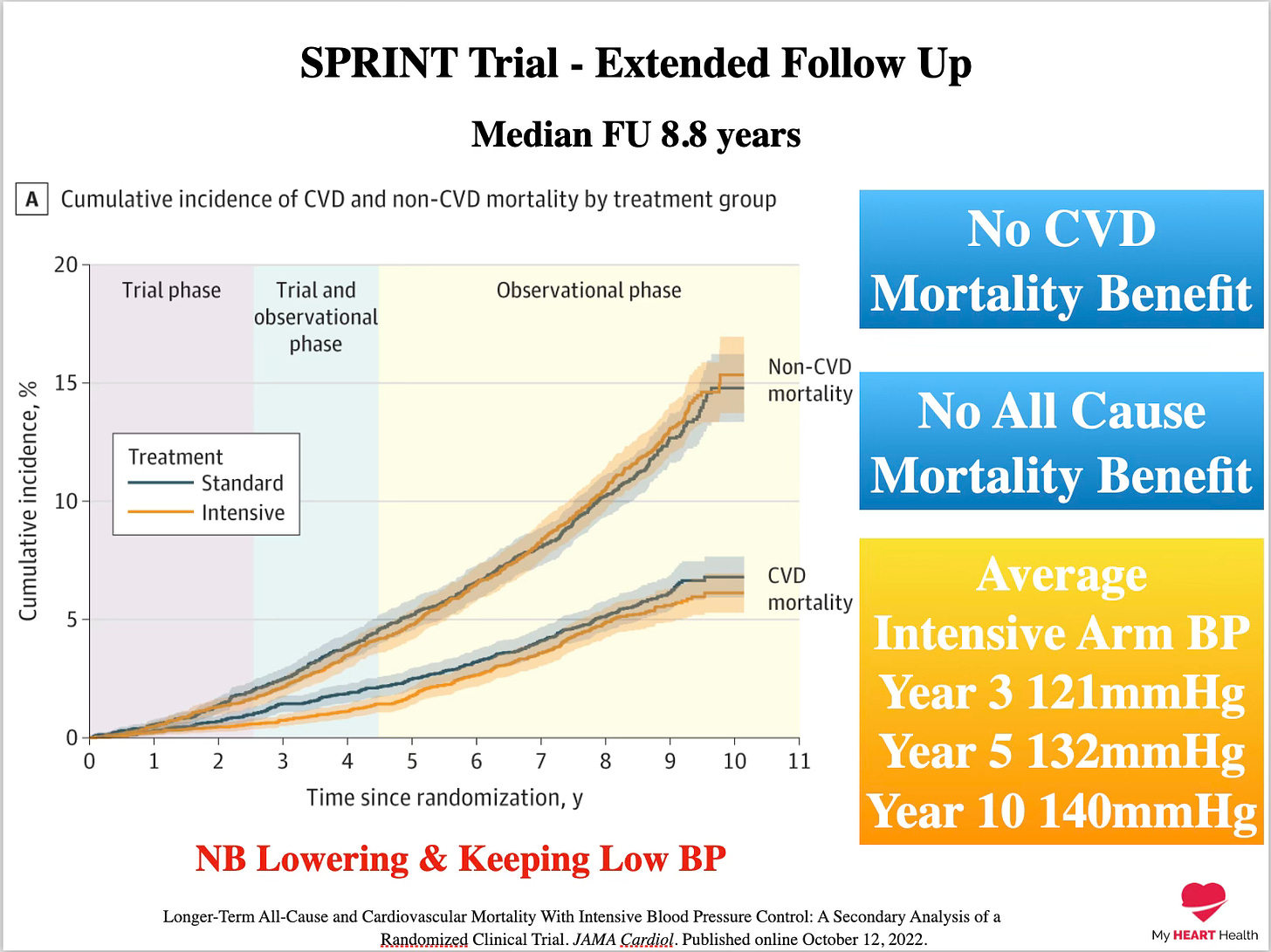Decoding the Optimal Blood Pressure: Is Yours on Target?

“What should my blood pressure be?”
This is one of the most common questions I get.
The answer is:
It depends.
If I were answering this question in the early 1930s, the figure I would give you would probably be far higher than it would be today.
The US President, Franklin D Roosevelt, had his blood pressure tracked throughout his term in office, and the numbers are pretty stark.
Shortly before he died, his blood pressure was measured at 350/195 mmHg1.
Yes. You read that correctly—350 mmHg!

While there were limited options to treat high blood pressure at the time, these figures were way above normal by anyone’s estimation.
When considering a target blood pressure to maintain, I should state the obvious that: it is better to achieve your target blood pressure without the use of medications and by optimising all necessary lifestyle factors.
I have written about how to do this previously.
However, we know this is rarely achieved.
About half of all adults have high blood pressure, defined as a systolic blood pressure greater than 130mmHg2.
In general, we do a terrible job of identifying and managing high blood pressure.
So, what blood pressure should most people aim for?
Three separate studies have examined this question, and the answer seems clear.
SPRINT Trial
The SPRINT trial randomised adults over 50 with a systolic blood pressure greater than 130mmHg to either strict blood pressure control with a target systolic less than 120mmHg or a less strict blood pressure target of less than 140mmHg.
The strict blood pressure group achieved an average of 121mmHg compared to the less strict groups of 136mmHg.
Over three years, the strict blood pressure control group had 25% fewer major cardiovascular events (strokes, heart attacks, etc.)3.
This group was also projected to live about three years longer.4


There were several criticisms of this trial, which primarily involved how blood pressure was taken, but a line in the sand had been drawn.
A target blood pressure of 120mmHg was now appropriate for many patients.
The internet is awash with magic potions to make you live longer, but here, in a simple blood pressure trial, was a potential 3-year life extension.
Nothing fancy. Just good blood pressure control.
This is a huge difference.
But was this trial an outlier?
STEP Trial
The STEP trial examined a cohort of patients similar to the SPRINT trial but this time set blood pressure targets to a range of 110-130mmHg or 130-150mmHg.
After three years, the 110-130mmHg group had 26% fewer major cardiovascular events5. This event reduction was extremely similar to that seen in the SPRINT trial.

Not all patients in the lower blood pressure group achieved the 110-130mmHg blood pressure target, which dilutes the impact of better blood pressure control.
When a separate analysis was performed, looking only at those who got into the lower range, the reduction in major cardiovascular events was 39%6.
Despite such consistent findings, patients routinely are left with blood pressures above this target and, as a consequence, are exposed to increased cardiovascular risk.
But wait. There’s more.
ESPRIT Trial
Once again, adults over 50 with high blood pressure were randomised into strict blood pressure control with a target systolic blood pressure of less than 120mmHg versus less than 140mmHg.
After three years, there were 11% fewer major cardiovascular events, but cardiovascular deaths were reduced by 39%7.

In each of these three trials, the average systolic blood pressure achieved was about 120mmHg.
This is my target systolic blood pressure for most of my patients.
Yes. For some older patients, I will not aim for this lower target, but for my younger patients, I make every effort to get them to this lower-bound target.
SPRINT Follow Up
The original SPRINT trial was conducted over three years, but recent 8-year data has been presented, which illustrates some very interesting findings.
The intensive blood pressure group (Less than 120mmHg) no longer showed any advantage over the less strict group in cardiovascular or non-cardiovascular mortality8.
Does this change my view on lower targets?
No. It only reinforces it.
Here is why.

As you can see from the graph shown, at 8.8 years, there was no difference between these two groups.
However, the average blood pressure of these groups converged, with each having an average systolic blood pressure of 140mmHg at ten years out.
After the trial ended, patients ended up back under their regular clinicians, who were not as strict with blood pressure control and as a consequence, much of the previous benefit was lost.
More than anything, this data supports the continued aggressive approach to blood pressure lowering.
What should your blood pressure be?
For most of my patients, I aim for at least the low 120 systolic range.
For some of my older patients, I am less stringent.
But in general, lower is better in my books.
For your next doctor's visit, I suggest you measure your blood pressure consistently over a 10-day period.
Average your figures out and see what you get.
If it’s not in the low 120s systolic range or below, think about what that might mean for you and what you need to do to get there.
The difference could mean several extra years of your life.
Hypertensive therapy: attacking the renin-angiotensin system. West J Med. 2001 Aug;175(2):119-24.
https://www.cdc.gov/bloodpressure/facts.htm#:~:text=Nearly%20half%20of%20adults%20have,are%20taking%20medication%20for%20hypertension.&text=About%201%20in%204%20adults,22.5%25%2C%2027.0%20million).
A Randomized Trial of Intensive versus Standard Blood-Pressure Control. N Engl J Med. 2015 Nov 26;373(22):2103-16.
Assessment of Long-term Benefit of Intensive Blood Pressure Control on Residual Life Span: Secondary Analysis of the Systolic Blood Pressure Intervention Trial (SPRINT). JAMA Cardiol. 2020 May 1;5(5):576-581.
STEP Study Group. Trial of Intensive Blood-Pressure Control in Older Patients with Hypertension. N Engl J Med. 2021 Sep 30;385(14):1268-1279.
Achieved systolic blood pressure and cardiovascular outcomes in 60-80-year-old patients: the Strategy of Blood Pressure Intervention in the Elderly Hypertensive Patients (STEP) trial. Eur J Prev Cardiol. 2023 Aug 1;30(10):1017-1027.
Effects of intensive blood pressure lowering treatment in reducing risk of cardiovascular events. Presented at: AHA 2023. November 13, 2023. Philadelphia, PA.
Longer-Term All-Cause and Cardiovascular Mortality With Intensive Blood Pressure Control: A Secondary Analysis of a Randomized Clinical Trial. JAMA Cardiol. 2022 Nov 1;7(11):1138-1146.




